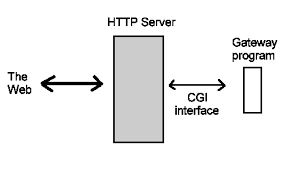4a Revolução Industrial = Transformação Digital = 5G + IoT + AI + Cloud Computing
Já tem vários anos (2013/2014/2015/2016/2017) que eu estou lendo na internet no Twitter, no Linkedin, em grupos no Facebook, e em revistas online diversos assuntos: Cloud Computing, Big Data, Data Science, Inteligência Artificial (AI), IoT, 5G, Blockchain, Fintech, etc, tentando compreender no global como será nosso futuro.
Essa tecnologia está avançando rápido demais, as pessoas ficam velhas, e as nossas crianças e adolescentes, tentam aprender e acompanhar esse progresso, mas notei que vários não conseguem entender a nova tecnologia, para poder conseguir compreender e acompanhar. O complicado tem que ser simplificado ao seu máximo, para as pessoas jovens e adultos poderem entender o básico, para depois conseguirem acompanhar o mais complicado dessa tecnologia nova, que a cada dia que passa , mais novidades são inventadas e criadas. Quando a inovação não é entendida e compreendida, quando a inovação não tem o sentido prático da invenção informado e comprovado, ela é rejeitada. Uma inovação só tem sucesso quando a sua utilidade é entendida e é aceita pelos consumidores da tecnologia. Com pessoas comuns (consumidores) as informações relativas a tecnologia tem que ser simples, e deixar a informação da complicação tecnológica para os técnicos analisar.
Essa 4a. Revolução Industrial, é a transformação digital que está sendo causada pela internet 5G + IoT + Inteligência Artificial (AI) + Cloud Computing de 2013 até 2017, pelo que eu li em vários artigos na internet.
Aqui no Brasil ainda estamos com a internet 4G nos celulares. Quando irá chegar a internet 5G no Brasil? Nossa transformação digital, no Brasil, somente irá acontecer quando chegar o 5G aqui.
=======================================================================
Translation
There are already several years (2013/2014/2015/2016/2017) that I'm reading on the Internet on Twitter, Linkedin, Facebook groups, and online magazines in various subjects: Cloud Computing, Big Data, Data Science, Inteligência Artificial (AI), IoT, 5G, Blockchain, Fintech, etc., trying to understand in the global how our future will be.
This technology is moving too fast, people are getting old, and our children and adolescents are trying to learn and follow that progress, but I noticed that many can not understand the new technology in order to be able to understand and follow. The complicated has to be simplified to its maximum, so that young people and adults can understand the basics, and then manage to follow the most complicated of this new technology, which with each passing day, more news are invented and created. When innovation is not understood and understood, when innovation does not have the practical meaning of the invention informed and proven, it is rejected. An innovation only succeeds when its usefulness is understood and accepted by technology consumers. With ordinary people (consumers) information regarding technology has to be simple, and let the information of the technological complication for the technicians to analyze.
This 4th. Industrial Revolution, is the digital transformation that is being caused by the internet 5G + IoT + Artificial Intelligence (AI) + Cloud Computing from 2013 to 2017, so I read in various articles on the internet.
Here in Brazil we are still with the 4G internet in the cell phones. When will the 5G internet arrive in Brazil? Our digital transformation in Brazil will only happen when 5G comes here.
Por Ana Mercedes Gauna (29/08/2017)
Senior Business Systems Analyst | MCSE | CCNA2 | Microsoft Partner
www.amgauna.eti.br | anagauna.wordpress.com | anagaunatech.blogspot.com
Twitter: @amgauna @AnaGaunaTech | GitHUB: @amgauna



